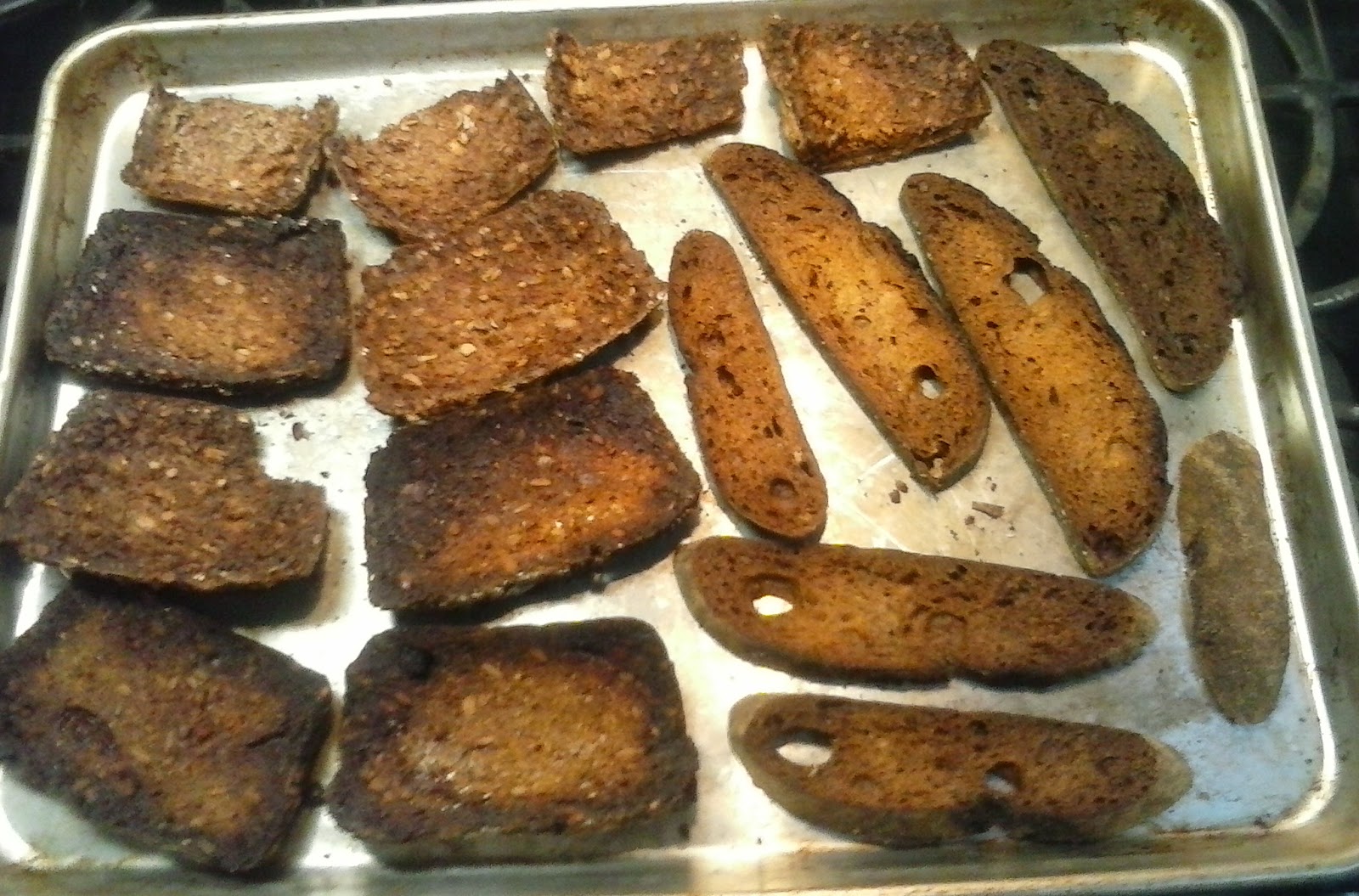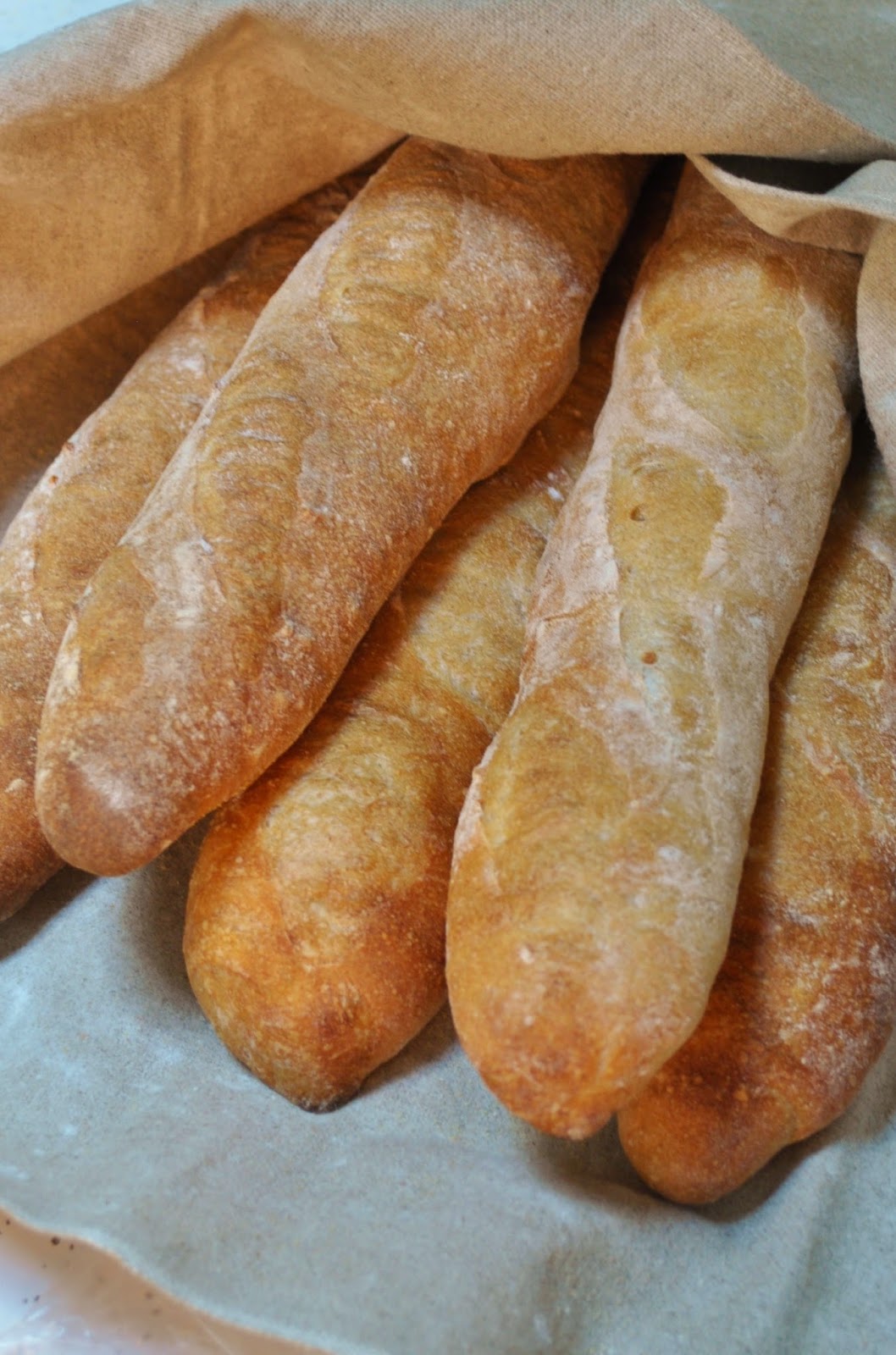Background:
Sourdough can really be pretty fascinating. It certainly isn't a typical ingredient in the normal sense. It's kinda more like a pet in the way you need to feed it and care for it if you want it to be healthy and active. And if you really think about what is going on in there, it's basically a miniature ecosystem - with yeasts and beneficial bacteria as the foundation species that live off of the primary productivity of the grains that you feed them, and all sorts of potential invasive species like molds, and other bacteria that can move in if the habitat changes too much.
I was passing some time the other day searching random things in Google Scholar, as us nerdy science types like to do (...or maybe its just me?), and I found a bunch of interesting scientific papers on the ecology of sourdough. As an ecologist (and a bread lover), I was impressed by the diversity that is present in sourdough. In one study the researchers took 28 traditional varieties and used genetic methods to identify the species of lactic acid bacteria and yeasts that were present (
ref). In these 28 cultures they found 11 different species yeasts and 17 lactic acid bacteria. On top of that, each culture was made up of multiple coexisting strains of yeast and bacteria. So these aren't just mono-cultures of clonally reproducing yeast and bacteria, but are truly microbial ecosystems with a diversity of both individuals and species.
The yeast and lactic acid bacteria in these mini-ecosystems are essentially a symbiosis, with the metabolic activity of each member producing the food and the environment that the other needs to thrive. Like all symbioses they become greater than the sum of their parts. By producing CO2, alcohols, and organic acids with antimicrobial activity, they create conditions that not only keep out foreign invaders (
ref), but improves the shelf life, nutritional qualities and flavor of the bread baked with it.
Fermenting flour with a sourdough culture increases the bio-availability of minerals and eliminates natural toxins found in whole grains (
ref). So in a way the symbiotic nature of sourdough can be extended to us, the human consumers. This actually may be more true than we realize, as some of the lactic acid bacteria found in sourdough cultures may have originated in the digestive system of mammals (
ref) meaning that we truly do have an evolutionary symbiotic relationship with certain components of the sourdough ecosystems!
Introduction
Since I have switched over to natural leavening with sourdough starter cultures I have made some really good loaves. I have been surprised however at how non-sour they are though. Some that sit and ferment extra long or overnight may have a mild tangy aftertaste, but generally this aspect is barely noticeable. But if I am going to call something a sourdough, I want to be able to make it nice and sour. I tried out a
36 hour french bread recipe and an
extra tangy recipe, but both were still quite mild. So then I had and idea - instead of manipulating the fermentation time - why not adjust the amount of fermented flour used in the first place?
I had a container of spent starter at 100% hydration that was accumulating in the fridge & I figured I could just incorporate that into the amount for flour and water used in a standard recipe.
Materials & Methods
* this might be a bit off since I waited a while before I wrote down what I did, but I think this is pretty accurate.
Bread Flour
AP Flour
Whole Wheat Flour
Spent Starter (100%)
Active Starter (100%)
Salt | Mass
200g
75g
50g
900g
100g
18g | Percentage
62%*
15%
23%
277%
31%
6% |
|
- The dry mass % only includes the dry flours and none of the flour in the starters. If those are considered this is about 60% hydration... despite the fact that no water is added. All of the hydration comes from the 100% hydration starters.
- About 60% of the flour included in this recipe is pre-fermented in the spent & active starters.
- You don't really knead this. Just fold periodically during fermentation.
Timeline:
1:30p
2p
5p
8p | Mix flour, water, and starters. Let rest for 30m to autolyse.
Transfer to an oiled bowl for fermentation and Incorporate the salt by stretching and folding.
Ferment at >75F for 3-4 hours, folding every occasionally
Divide into 2 loaf sized portions
Place in floured banneton and proof at >75F for 3-4h
Bake at 450F for 25-30m in a covered dutch oven |
Results
This turned out to be a fairly nice crackly loaf. The crumb was a bit on the dense side but had some decent holes, and there was a fairly thick crust but not too bad. The sour flavor definitely came through, and seemed to develop more with time a couple days after the bake. The second loaf (below) flattened out a bit. This is probably because the proteins in all that pre-fermented flour weren't able to hold the structure as well as fresh flour would.
Conclusion
I think this method of using a larger amount of pre-fermented flour is a good way to get the sourdough flavor to be more distinct. The use of old spent starter works acceptably well and is a nice way of using what you accumulate. Still, I think mixing up a large volume of fresh starter would probably be better for leavening power.
I read recently that even subtle details like the % hydration that you keep the starter at can affect the type of flavors that come through in your bread (
ref). Wet starters like mine (100%) apparently promote lactic acid producing microbes, while dryer cultures (50-60%) promote acetic acid production. It seems like the cheesy/yogurty flavors associated with lactic acid are preferable for brioche & pastries, and more acetic acid might be better for more savory loaves. Perhaps I will play around with that in the future.




















































